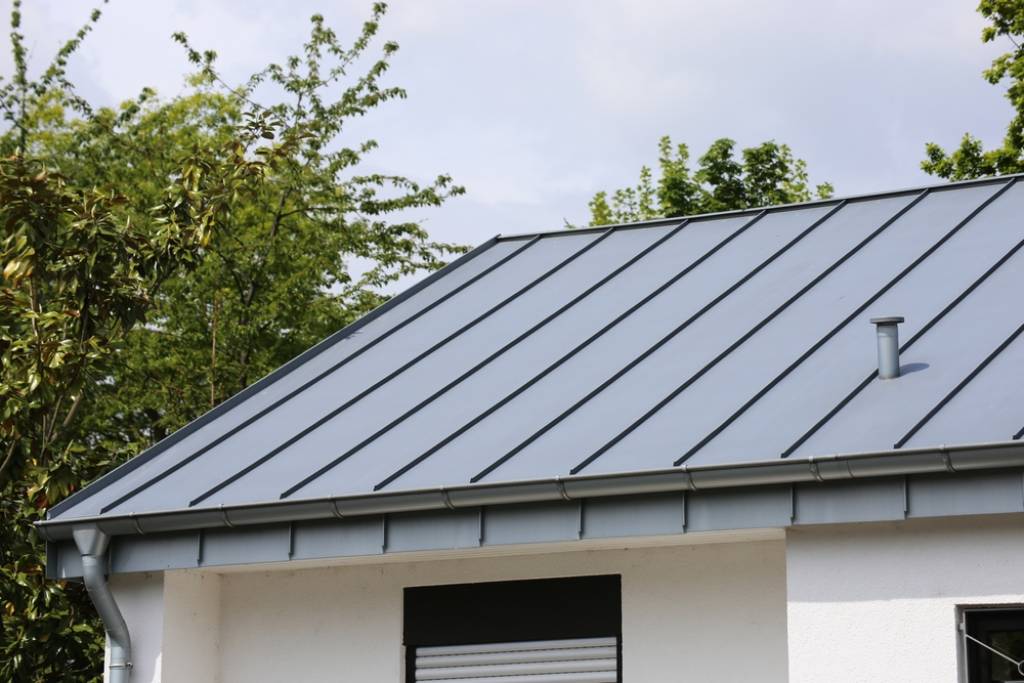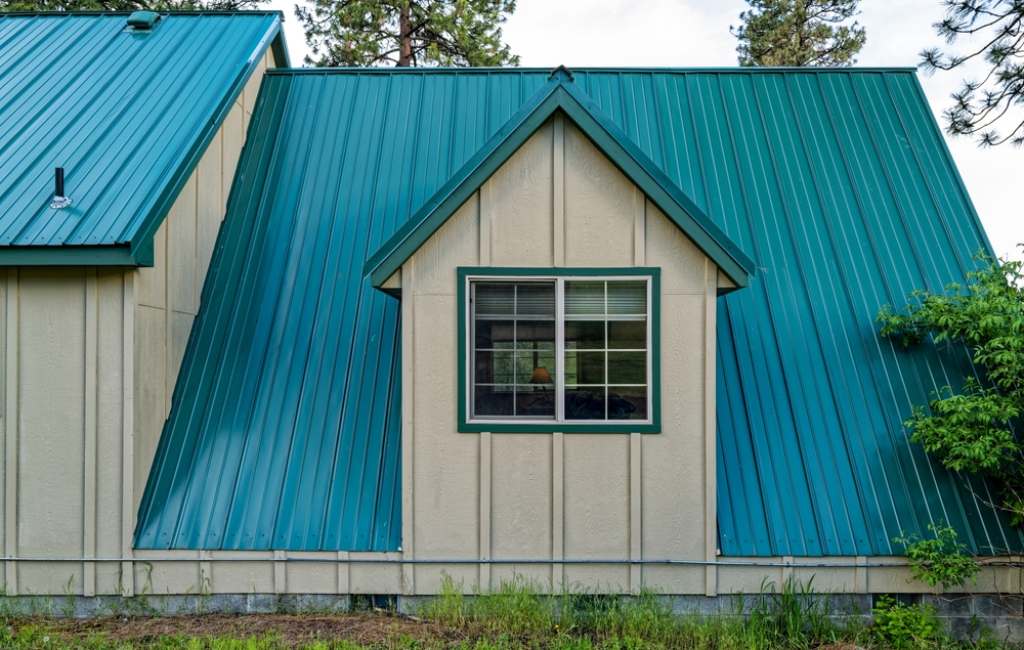This roofing type has gained immense popularity for its durability, energy efficiency, and sleek appearance.
Whether you’re contemplating a new installation or considering a roof replacement, understanding these cost determinants is crucial. From material and labor costs to the size and complexity of your roofing project, we’ll cover it all to help you make an informed decision.
Understanding Standing Seam Metal Roofs
Standing seam metal roofs are distinguished by their raised interlocking seams that join the panels together. This design not only contributes to their aesthetic appeal but also enhances their durability and corrosion resistance. The type of metal used varies, offering options like galvanized steel, which impact the overall cost.
These roofs are celebrated for their longevity and ability to withstand extreme weather conditions, making them a preferred choice for many homeowners. Next, we’ll explore the key factors that affect their installation and total cost.
Factor 1: Material Costs
The material cost is a significant component of the total expense for standing seam roof installation.
Common materials used include galvanized steel, aluminum, and occasionally, more expensive options like copper or zinc. The choice of material directly influences the price, with galvanized steel being a cost-effective option while copper stands on the higher end of the spectrum.
The cost per square foot varies based on the metal type’s durability, aesthetic appeal, and weight. Additionally, the finish and thickness of the material can also affect the price, making it crucial to balance cost with the desired quality and longevity of the roof.
Factor 2: Roof Size and Complexity
The overall size of the roof plays a pivotal role in determining the cost. Pricing is often calculated for standing seam metal roofs cost per square foot, meaning larger roofs will naturally incur higher material and labor costs.
Moreover, the complexity of the roof – including factors like slopes, angles, and the number of cutouts for chimneys or vents – can increase the installation cost. Complex roofs require more time and precision in installation, adding to the labor expenses.
Factor 3: Labor Costs
Standing seam metal roof installation costs can vary significantly based on the contractor and the project’s complexity. Skilled labor is essential for a seamless installation, as the process requires precise measurement, cutting, and fitting. Regions with higher costs of living tend to have higher labor rates.
Moreover, if the installation involves removing an old roof or preparing the roof deck, this will further add to the labor costs. It’s important to get detailed quotes from several roofing contractors to understand the labor costs involved in your specific project.

Factor 4: Roof Deck Condition
Before installing a standing seam metal roof, the condition of the existing roof deck must be evaluated. If the roof deck is damaged or inadequate, it may need repair or replacement, which adds to the overall cost.
A stable and well-maintained roof deck is crucial for the long-term performance of the metal roof. In some cases, additional support or modification may be needed to handle the weight or design of the metal roof, which will increase the project’s total expense.
Factor 5: Type of Metal Used
The type of metal used for the roof impacts both the cost and performance. Aluminum is lightweight and resistant to corrosion, making it suitable for coastal areas. Galvanized steel, treated with a layer of zinc for corrosion resistance, is a popular and economical choice. Copper and zinc are premium options, offering unique aesthetics and superior longevity, but at a higher cost.
The choice of metal will influence the roof’s lifespan, maintenance needs, and energy efficiency, all of which should be considered alongside the cost.
Factor 6: Energy Efficiency Features
Standing seam metal roofs can contribute significantly to a home’s energy efficiency. Reflective coatings and specialized pigments can be applied to metal roofs to reflect solar heat, reducing cooling costs in the summer.
While these energy-efficient features might increase the upfront cost, they can lead to substantial savings in utility bills over time. Homeowners should consider the long-term financial benefits of these features when evaluating the overall cost.
Factor 7: Additional Features and Customizations
Additional features and customizations can also influence the cost of a standing seam metal roof. Options like custom colors, coatings for enhanced corrosion resistance, and decorative finishes can add to the aesthetic appeal but also increase the price.
These customizations are often chosen to match the home’s architectural style or to meet specific climate requirements. While they add to the upfront cost, they can also enhance the roof’s longevity and the overall value of the property.
The Bottom Line
The cost of a standing seam metal roof is influenced by a variety of factors, including materials, roof size, labor, and customizations. By understanding these elements, homeowners can make informed decisions that balance cost with quality, ensuring a durable, efficient, and aesthetically pleasing roofing solution.

